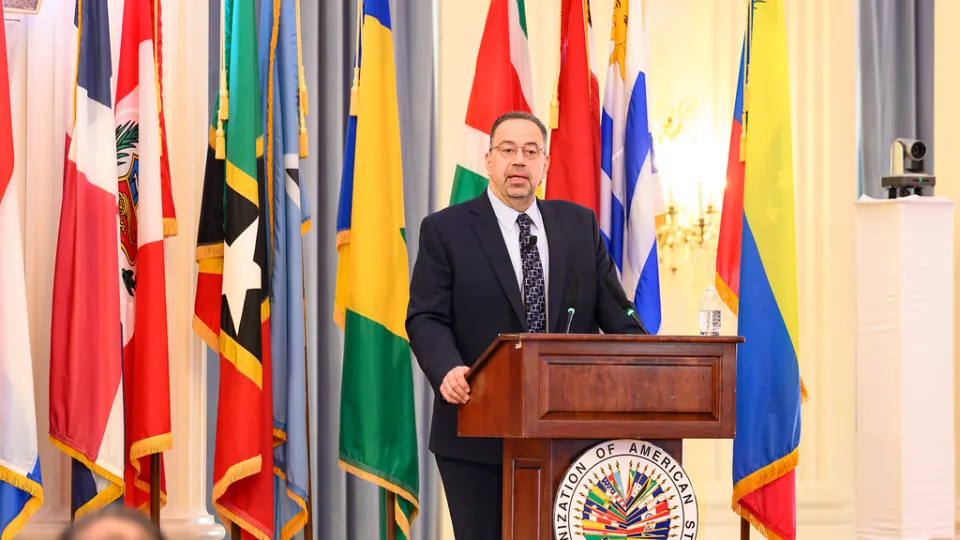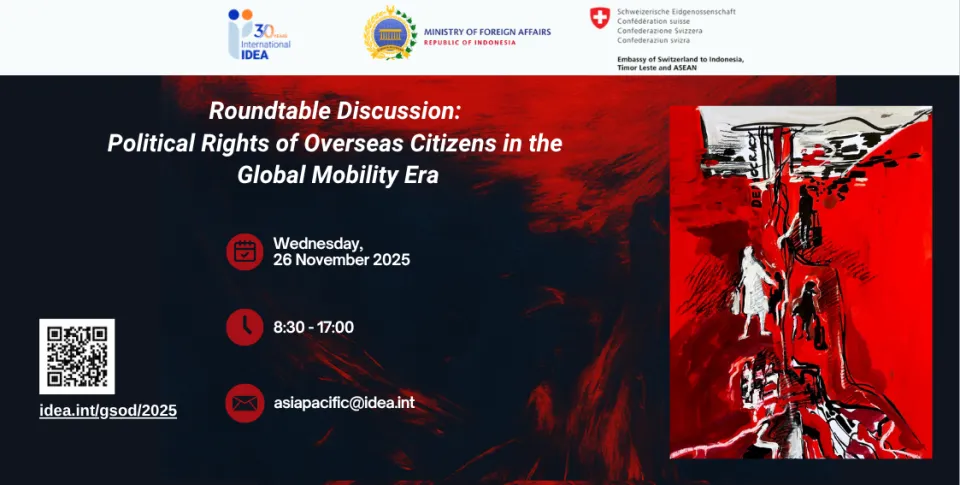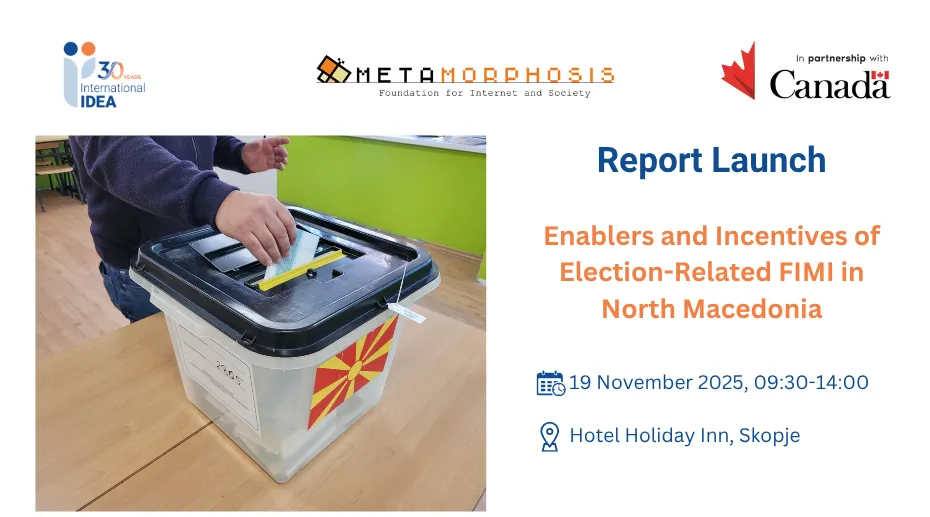
On 25 October 2015, Ukraine held its first local elections since the 2014 Euromaidan protests. The stakes were high for local and international stakeholders, both because of the promise of increased decentralization to the regions and because the polls were seen as a test of President Petro Poroshenko’s efforts to act on the Euromaidan protestors’ demands for increased transparency, accountability and inclusivity in government.
While the government had implemented some reforms, there was deep public dissatisfaction with the current government’s overall track record and voters voiced a readiness for serious and more expedient change. A pre-election poll revealed that 68 per cent of Ukrainians felt things were going in the wrong direction, and 48 per cent said they strongly disapproved of parliament’s performance. Strikingly, less than 1 per cent said they strongly approved of parliament.
In what was perhaps the most clear sign of mass disillusionment, Prime Minister Arseniy Yatsenyuk’s People’s Front party decided to drop out of the election altogether. The decision was attributed to poll results which indicated only 1 per cent of support for the party, a striking drop from the 22 percent support it received in parliamentary elections last year. Despite these problems, Ukrainians indicated a readiness for elections, with some 75 per cent of the populationsaying they were somewhat or very likely to vote.
The Electoral Environment: Legal Reforms
The elections took place under a new Local Electoral Law, signed into effect on 6 August 2015, less than three months ahead of election day. The law was a critical pillar of planned reforms, expected to dismantle oligarchic local power structures and facilitate a more broad and representative spectrum of candidates. Almost universally, however, analysts and observers have criticized the new statutes for their complexity and failure to go far enough in democratizing the playing field.
Some of the most significant problems include:
- Three electoral systems for various levels of government: For mayors, settlements and village councils, there are direct elections under a majoritarian system. First-past-the-post system is to be used for villages, settlements and cities with fewer than 90,000 voters and a two-round system is in place for mayoral elections in cities with at least 90,000 voters. Region, district, city and city district councils are elected under a multi-member proportional representation system referred to as an “open list” system. Since voters are not able to choose between candidates, however, analysts say this system cannot truly be considered “open list”. The complexity of the system, coupled with the very late passage of the law, made voter education efforts difficult. Indeed, less than 1 per cent of surveyed Ukrainians said they had “very high knowledge” of the election law and only 35 per cent had even a “very low level” of knowledge. In its post-election statement, the Committee of Voters also noted the lack of a “state information campaign” on the new electoral system.
- Gender equality: The law’s gender provisions, which stipulate that candidate lists must include at least 30 per cent representation of each gender, lack critical enforcement rules. In fact, the electoral management bodies (EMB) adopted a regulation that parties’ non-fulfilment of the gender quota cannot be grounds for the rejection of candidate lists. The Kyiv Administration Court of Appeals then took two contradictory decisions about the CEC’s position, leaving the issue unresolved and increasing the risk that the gender equality provisions will be applied inconsistently throughout the country.
- Internally displaced people (IDPs) and other temporary residents: The electoral law does not provide for the voting rights of the approximately 5 million IDPs and other temporary residents within Ukraine (for example, Ukrainians who work in Kiev but who are from other regions), effectively disenfranchising approximately 14 percent of its voting age population. The EMB also decided that no elections would take place in rebel-held territories as well as in certain Ukrainian-controlled areas close to the frontlines. This gap in voting rights means that it will be much harder for the minority, pro-Russia leaning segments of the population to make their voices heard.
- Independent candidates: The law also restricts independent candidates to village and settlement races; independent candidates cannot contest at any other electoral level.
- Campaign finance: There are few regulations related to campaign finance. Campaigns can be financed by candidates, parties and private donors, and there is no ceiling for campaign expenditures. The only restriction is that private donations cannot exceed the equivalent of 10 minimum salaries, or about 487 Euros. While candidates must submit interim and final financial reports to the local EMBs, these bodies do not have the capacity to verify the accuracy of the reports.
- Media: In April 2015, the Ukrainian parliament passed a law criminalizing the public denial of the activities of the communist and Nazi regimes and bans all related symbols, except for restricted educational or scientific purposes. Violation of the law carries a penalty of potential termination of activities of media and prison sentences for five to 10 years. Another law, passed in May 2015, introduces liability for publicly expressing disrespect for certain groups of fighters for Ukrainian independence in the 20th century and criminalizes public denial of the legitimacy of their fight for Ukraine’s independence. In response, the Organization for Security and Cooperation in Europe (OSCE’s) Representative on Freedom of the Media stated, “While I fully respect the often sensitive and painful nature of historical debate and its effect on society, broadly and vaguely defined language that restricts individuals from expressing views on past events and people, could easily lead to suppression of political, provocative and critical speech, especially in the media.”
Election Day
Despite survey results that promised high rates of voter participation, voter turnouton election day reached only approximately 47 per cent, sparking some analysts to describe the election day as the “day of disillusionment.”
International IDEA was on the ground for the election, assisting with the Council of Europe-funded media centre for civil society organizations. The media centre was a resource centre for local and international media outlets, as well as for civil society organizations. The centre hosted several public events, including panels on electoral security, domestic observation, international perspectives and evaluations of the elections and the impact of gender quotas. In one panel, International IDEA presented comparative case studies on the growing importance of citizen observation and its impact on the understanding of electoral integrity.
Electoral Integrity in Ukraine
In its initial post-election statement, the Committee of Voters stated that it had recorded more than1,500 violations of the law. Most of these, however, were technical and/or procedural in nature and would likely not impact the final result. Some of the most notable violations included the delayed opening of polling stations and a lack of forms at the polling stations.. According to the Committee of Voters (CVU), the most significant problems included errors in the text on ballot papers, insufficient ballots at certain polling stations and missing ballots.
The other most notable problem was the complete cancellation of elections in Mariupol and Krasnoarmiisk, both of which had fallen under rebel control last year but were recaptured by the Ukrainian military. In these cities, allegations of fraud and of flawed ballots prompted authorities to cancel the poll. It is worth noting that pre-election polls in these areas showed the pro-Russian Opposition Bloc in the lead. Elections in these areas will now be rescheduled.
Results
While the count has not been finalized, initial results show a stark division between the eastern and western regions of the country. In Kharkiv, a figure known for his role in organizing assaults on Euromaidan protestors appears to have won the mayoral race in the first round. Clearly, significant issues still divide the country and electoral competition in Ukraine has a long way to go before these rifts can be fully bridged.
Ukrainian Election Stats:
- More than 350,000 candidates
- 168,450 positions of mayors and councillors
- 47 per cent turnout
- 29,815,753 eligible voters’
- 132 political parties
- 10,778 Territorial Election Commissions
- 30,000 Precinct Election Commissions



